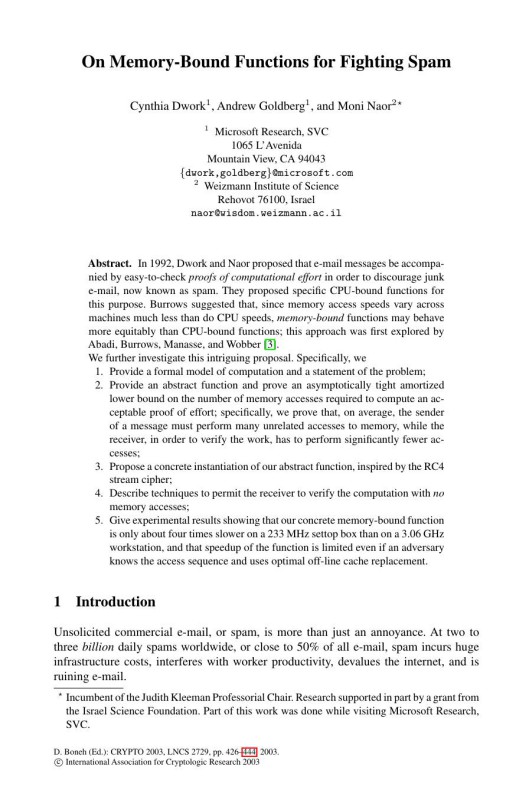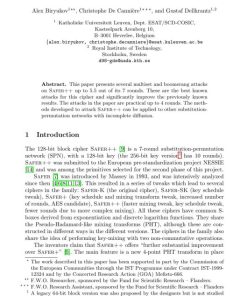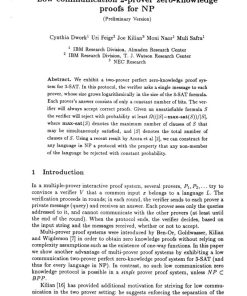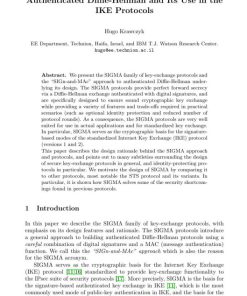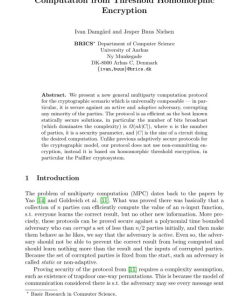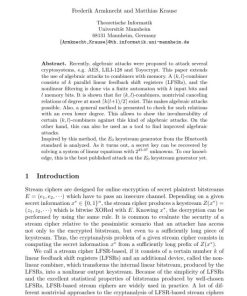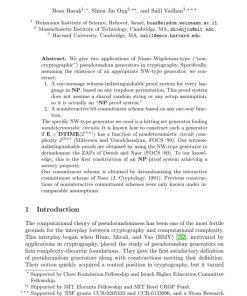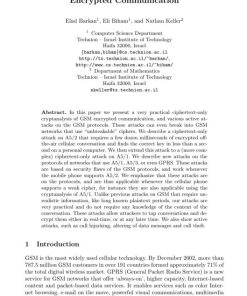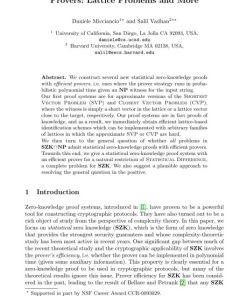LNCS 2729 On Memory Bound Functions for Fighting Spam 1st Edition by Cynthia Dwork, Andrew Goldberg, Moni Naor ISBN 3540451463 9783540451464
$50.00 Original price was: $50.00.$25.00Current price is: $25.00.
Authors:Cynthia Dwork, Andrew Goldberg; Moni Naor , Tags:Advances in Cryptology – CRYPTO 2003 , Author sort:Cynthia Dwork, Andrew Goldberg & Naor, Moni , Languages:Languages:eng , Published:Published:Jun 2003
LNCS 2729 – On Memory-Bound Functions for Fighting Spam 1st Edition by Cynthia Dwork, Andrew Goldberg, Moni Naor – Ebook PDF Instant Download/Delivery. 3540451463, 9783540451464
Full download LNCS 2729 – On Memory-Bound Functions for Fighting Spam 1st Edition after payment
Product details:
ISBN 10: 3540451463
ISBN 13: 9783540451464
Author: Cynthia Dwork, Andrew Goldberg, Moni Naor
LNCS 2729 – On Memory-Bound Functions for Fighting Spam 1st Edition:
In 1992, Dwork and Naor proposed that e-mail messages be accompanied by easy-to-check proofs of computational effort in order to discourage junk e-mail, now known as spam. They proposed specific CPU-bound functions for this purpose. Burrows suggested that, since memory access speeds vary across machines much less than do CPU speeds, memory-bound functions may behave more equitably than CPU-bound functions; this approach was first explored by Abadi, Burrows, Manasse, and Wobber [3].
We further investigate this intriguing proposal. Specifically, we
1) Provide a formal model of computation and a statement of the problem;
2) Provide an abstract function and prove an asymptotically tight amortized lower bound on the number of memory accesses required to compute an acceptable proof of effort; specifically, we prove that, on average, the sender of a message must perform many unrelated accesses to memory, while the receiver, in order to verify the work, has to perform significantly fewer accesses;
3) Propose a concrete instantiation of our abstract function, inspired by the RC4 stream cipher;
4) Describe techniques to permit the receiver to verify the computation with no memory accesses;
5) Give experimental results showing that our concrete memory-bound function is only about four times slower on a 233 MHz settop box than on a 3.06 GHz workstation, and that speedup of the function is limited even if an adversary knows the access sequence and uses optimal off-line cache replacement.
LNCS 2729 – On Memory-Bound Functions for Fighting Spam 1st Edition Table of contents:
1 Introduction
2 Review of the Computational Approach
3 Computational Model and Statement of the Problem
4 Simple Suggestions and Small-Space Cryptanalyses
5 An Abstract Function and Lower Bound on Cache Misses
5.1 Description of the Abstract Algorithm
5.2 Lower Bound on Cache Misses
6 A Concrete Proposal
6.1 Description of MBound
6.2 Parameters for MBound
7 Experimental Results
7.1 Different Architectures
7.2 Memory- vs. CPU-Bound
8 Freeing the Receiver from Accessing T
9 Concluding Remarks
People also search for LNCS 2729 – On Memory-Bound Functions for Fighting Spam 1st Edition:
memory functions by quizlet
what is the function of a memory b cell
memory bound function
memory-bound application
c memory functions

